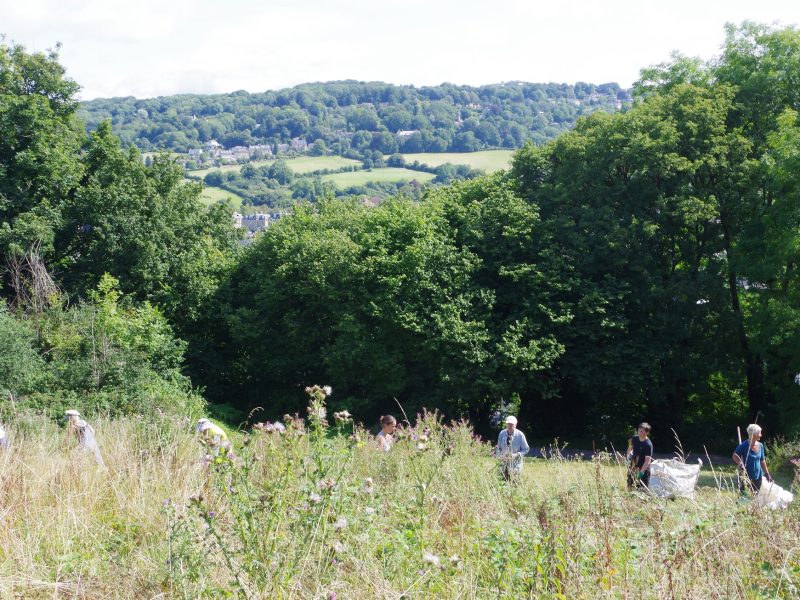By Harry Mottram. Regular readers of Bath Voice will have been kept informed of the work of the Friends of Lyncombe Hill Fields.
The Friends of the fields have been busy toiling in the five fields over the last few months and in that activity they are treading in the footsteps of countless farm workers and before them serfs
On their website the Friends have a section on the history of the land – and had a talk online last year to illustrate the heritage of the land where a farm existed until the 20th century.
Little is known of the site before the Saxon era in the early Medieval period although evidence of occupation of Bath dates to around 9,500 BCE and of course the Ancient British lived near the hot springs when the Romans arrived.
Certainly the fields would have been woodland until Saxon farmers began to clearly the forests around Bath.
In their history of the fields the Friends report: “The area of Lyncombe and Widcombe (with its centre at Cliftune, believed to be a settlement below Beechen Cliff was granted to Bath Priory by King Edgar in the year 970.”
Following the arrival of the Normans in 1066 land records began to be kept efficiently. We learn that in the Domesday Book of 1086, the area is named as Lincome.
Moving on to the Tudor era the village of Lyncombe has a manor house called Lyncombe Hall in Lyncombe Vale.
The history reports: “In 1539 the Priory, along with all such religious institutions in England, was dissolved by Henry VIII and the land passed to the ownership of the Crown.
“By the beginning of the 17th century, Hugh Sexey had bought the manor outright and, when he died in 1610, the trustees of the estate as well as founding a hospital in his name, (also known as Bruton Hospital), sold property from the various estates.”
During the Norman period it is likely the fields would have likely have been rough grazing with coppicing of the woods – all worked by serfs and later freemen in employ of the local landowners.
Moving into the 17th and 18th centuries farming had become established with the early 19th century a farm had been established in corner of the field closest to Greenway Lane where ruined parts remain.
By the 19th century the farm called Lyncombe Hill Farm, (and Greenway Farm) was prospering with dairy cows, pigs and poultry and run by Henry Dagger.
The farm supplied milk to the villagers and to the growing number of houses appearing up the lane and in Bear Flat. After his death the farm was run by Edward Millwater and then Henry Brooke. It had grown to a much larger site than the five fields that remain today stretching to 21 acres (8.5 ha) complete with a house and farm buildings.
By the 20th century the land had become of interest to the city council with plans for a school on the farm which eventually came to fruition in 1931 when the foundation stone for what became Beechen Cliff school was laid – although not on the sloping fileds but on the land above where it now lies.
The development of houses further encroached on the former farmland leaving an increasingly smaller site with the city council acquiring the remaining fields in 1938.
The Field’s website reported: “In 1941 two acres of the land was turned into allotments for the ‘Dig for Victory’ campaign.
“The 10 acres of Lyncombe Hill Farm for which a Licence to manage was awarded to the Friends of Lyncombe Hill Fields on September 1st 2020 are therefore a reminder of what until the start of the 20th Century comprised around 90 acres of prime farmland within the area defined by Lyncombe Hill, Greenway Lane, Entry Hill, Wellsway and the north face of Beechen Cliff.
“Roughly half of these 90 acres has had houses built on it, but the other half of the total site (including Alexandra Park which opened in 1901, and the rights of way across Beechen Cliff school) is still available to be enjoyed by all of us.”
In 2018 the land was being used for grazing but when the lease expired a group of residents put together the idea of turning the fields into the community asset open to all and an area of conservation and recreation.
Bath Voice Local History: In the footsteps of serfs, farm workers and Henry Dagger in the Lyncombe Hill Fields


